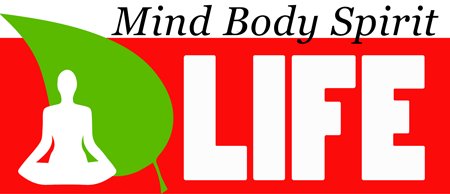Unlocking the Phallic Mystique: 7 Reasons for Subconscious Female Devotion

Abstract
Across history and culture, the male phallus has occupied a position of profound symbolic and psychological importance; not just to men, but notably within the subconscious lives of women. This article investigates the reasons women may subconsciously revere or psychologically elevate the male phallus, examining the phenomenon through evolutionary psychology, neurobiology, archetypal theory, and sociocultural anthropology. The goal is not to make a universal statement about all women, but to explore underlying factors that may contribute to a pattern of subconscious attraction, awe, or symbolic “worship” observed across many cultures and personal narratives.
1. Evolutionary and Biological Foundations
From an evolutionary standpoint, the male phallus is inseparably linked to reproduction; the core biological drive of life. Evolutionary psychology suggests that female attraction to traits associated with virility, dominance, and fertility has adaptive roots. The size, shape, and function of the penis as a reproductive organ may act as subconscious signals of genetic fitness, particularly within contexts that prioritize physical strength and reproductive success.
Biologically, during heterosexual intercourse, the physical sensation of vaginal-cervical stimulation, particularly in deeper penetrative positions, activates parts of the female brain associated with emotional bonding and reward (e.g., the limbic system). The neurochemical release of oxytocin and dopamine reinforces a sense of closeness, connection, and even reverence for the penetrating partner. In this physiological dance, the phallus becomes not just an organ but a catalyst for intense physical and emotional experiences, biologically reinforcing its symbolic power.
2. The Phallus as Archetype in the Jungian Unconscious
Carl Jung proposed the concept of universal archetypes; primordial symbols that exist within the collective unconscious of humanity. The phallus is among the most potent archetypes, traditionally associated with power, creation, fertility, and even divine energy.
In Jungian psychology, the phallus can be interpreted as a symbol of generative force; not merely sexual but also spiritual and psychological. For many women, especially those with submissive or receptive psychological orientations, the symbolic phallus may represent a merging with something larger than the self; a dissolution of ego into archetypal union. In this view, subconscious reverence toward the phallus may reflect a deeper spiritual longing for surrender, unity, or transcendence through connection with the masculine principle.
3. Psychosexual Development and the Phallic Stage (Freud)
Sigmund Freud’s controversial but still influential theories about psychosexual development place emphasis on the so-called phallic stage, where children become aware of anatomical differences and begin to associate the phallus with power and identity. Freud controversially proposed that some women may internalize feelings of “penis envy,” a term now largely outdated and heavily critiqued.
Contemporary interpretations reframe this idea not as literal envy but as symbolic longing for agency, influence, or connection with power. In this context, some women may subconsciously “worship” the phallus not as a loss, but as a bridge to empowerment; either through erotic surrender or symbolic union. The phallus, then, becomes a means by which psychological completion is sought.
4. Cultural and Historical Symbolism
The phallus has been a cultural symbol of reverence throughout history. Ancient societies, from the Greeks to the Hindus, created entire rituals and deities centered around phallic worship. Shiva’s lingam, the Greek Herm, and the Roman fascinum are examples of phallic icons associated with protection, fertility, strength, and divine masculinity.
In patriarchal cultures, where power is often associated with masculinity, the phallus may acquire a subconscious association with authority, safety, or transcendence. For some women raised in such cultures, this can lead to a psychological imprint that views the phallus as an object of desire, fear, longing, or even worship; regardless of conscious feminist frameworks.
5. Submissive Psychology and Erotic Imprinting
In the psychology of submission, particularly within BDSM and power exchange dynamics, the phallus can become central to the symbolic act of surrender. For many submissive women, the act of receiving the phallus is not simply physical but ritualistic; symbolizing obedience, openness, and transformation.
Erotic imprinting (experiences that occur during early or formative sexual events) can also anchor powerful emotional significance to the phallus. If a woman’s early or most profound sexual experiences involve intense emotional states (e.g., being desired, overpowered, or fulfilled), those emotional associations can become encoded in the subconscious and projected onto the phallic symbol.
6. Neurochemical Bonding and Orgasmic Surrender
Female orgasm, particularly through penetrative sex, is strongly linked to limbic system activity; the emotional center of the brain. During orgasm, a woman’s brain may enter an altered state of consciousness similar to trance, meditation, or deep emotional release. Within this neurochemical state, associations with the source of pleasure become highly encoded in memory.
When the source of that pleasure is the phallus, especially during repeated or intense encounters, the brain may create a deep imprint of reverence toward it. Over time, this can evolve into what some women describe as a need, a longing, or a near-spiritual admiration. Though not conscious in every case, the cumulative effect can create a powerful subconscious link between fulfillment and the phallus.
7. Conclusion: A Multidimensional Phenomenon
While not universal, the subconscious reverence or “worship” of the male phallus observed in some women arises from a complex interplay of biological instincts, archetypal symbolism, cultural programming, and personal psychological development. It is a multifaceted phenomenon, not reducible to a single cause but better understood as the convergence of many deeply rooted forces.
This perspective does not suggest dependency or weakness; rather, it invites a deeper understanding of how ancient symbols, evolutionary drives, and intimate psychology shape the female erotic mind. As sexual psychology continues to evolve, we must hold space for both biological realities and psychological truths; recognizing that what we revere often mirrors what we seek: connection, surrender, creation, and transcendence.
Author’s Note:
The purpose of this article is to explore an often-unspoken dimension of female sexuality in an informed and respectful way. As with all aspects of human sexuality, individual experience varies greatly, and no singular narrative applies to all.




Leave a comment